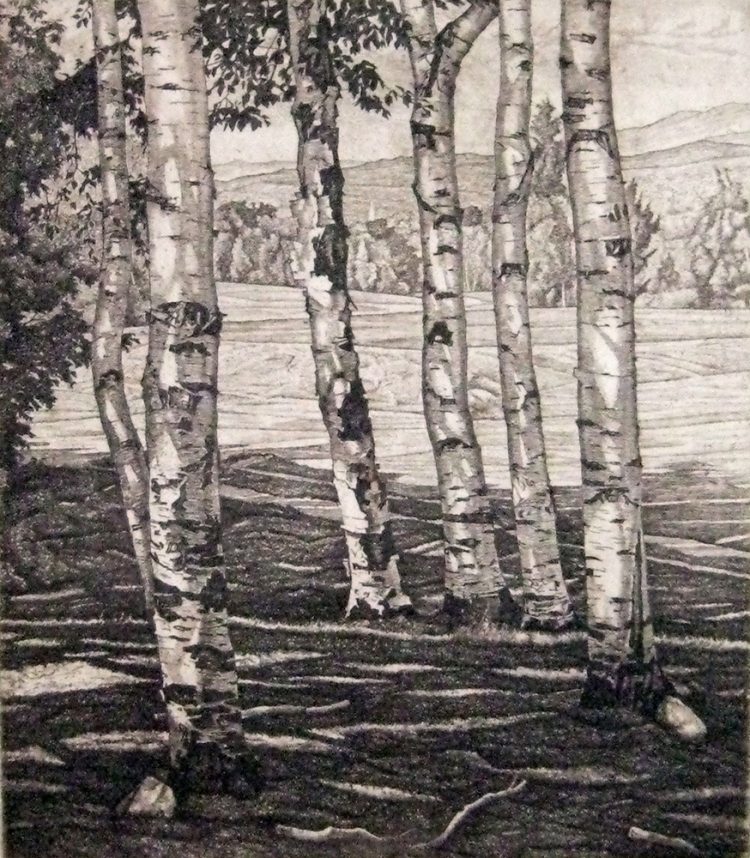
About this Work
About the Artist
Italian, American
b. 1900 Malnate, Italy
d. 1988 Greenwich Village, NY
Giuseppe Luigi Carlo Benevenuto Lucioni was born in 1900 in Malnate, Italy, a small town north of Milan. He came to the U.S. with his family when he was ten years old. He attended the Cooper Union School of Art and National Academy of Design where he studied etching with William Auerbach Levy. In 1925, Lucioni returned to Italy for the first time since he was a boy. Studying the works of early Italian Renaissance painters, particularly Piero della Francesca and Masolino da Panicale (whose frescoes adorn the church and baptistery of Castiglione Olona, where his parents were born), left a lasting impression on the artist.He had his first one-man exhibition at the Ferargil Galleries in New York in 1927. His paintings quickly earned him national recognition and sold well, even in the difficult economic climate of the Depression. In 1931, he was commissioned to paint a Vermont landscape. While it was not the first time that he had been to the state, during this trip he was struck by the beauty of the mountains and their resemblance to northern Italy and began visiting regularly. He bought a farmhouse near Manchester in 1939, and from then on divided his time between Vermont and New York City.When the Metropolitan Museum of Art purchased one of his still lifes, Dahlias and Apples, in 1932, he became the youngest living artist to be represented there. Today his works can be found in many other major museums including the Whitney Museum of American Art, the Brooklyn Museum, the Pennsylvania Academy of the Fine Arts in Philadelphia, the Dallas Museum of Art, and the Carnegie Museum of Art in Pittsburgh.
b. 1900 Malnate, Italy
d. 1988 Greenwich Village, NY
Giuseppe Luigi Carlo Benevenuto Lucioni was born in 1900 in Malnate, Italy, a small town north of Milan. He came to the U.S. with his family when he was ten years old. He attended the Cooper Union School of Art and National Academy of Design where he studied etching with William Auerbach Levy. In 1925, Lucioni returned to Italy for the first time since he was a boy. Studying the works of early Italian Renaissance painters, particularly Piero della Francesca and Masolino da Panicale (whose frescoes adorn the church and baptistery of Castiglione Olona, where his parents were born), left a lasting impression on the artist.He had his first one-man exhibition at the Ferargil Galleries in New York in 1927. His paintings quickly earned him national recognition and sold well, even in the difficult economic climate of the Depression. In 1931, he was commissioned to paint a Vermont landscape. While it was not the first time that he had been to the state, during this trip he was struck by the beauty of the mountains and their resemblance to northern Italy and began visiting regularly. He bought a farmhouse near Manchester in 1939, and from then on divided his time between Vermont and New York City.When the Metropolitan Museum of Art purchased one of his still lifes, Dahlias and Apples, in 1932, he became the youngest living artist to be represented there. Today his works can be found in many other major museums including the Whitney Museum of American Art, the Brooklyn Museum, the Pennsylvania Academy of the Fine Arts in Philadelphia, the Dallas Museum of Art, and the Carnegie Museum of Art in Pittsburgh.
